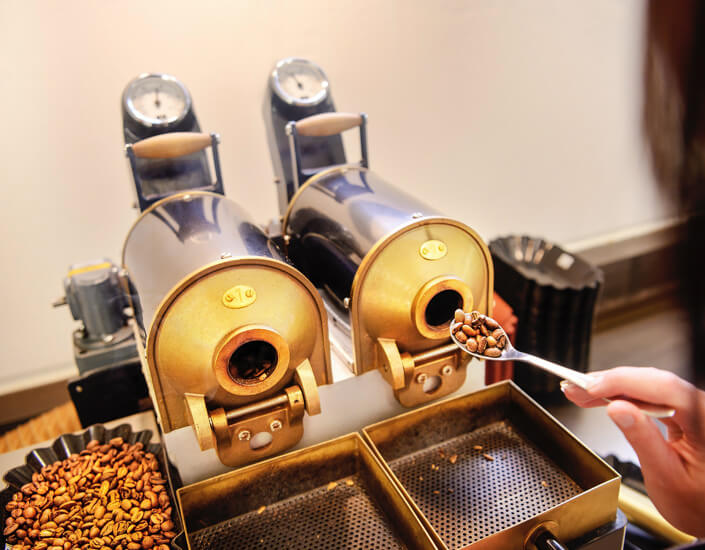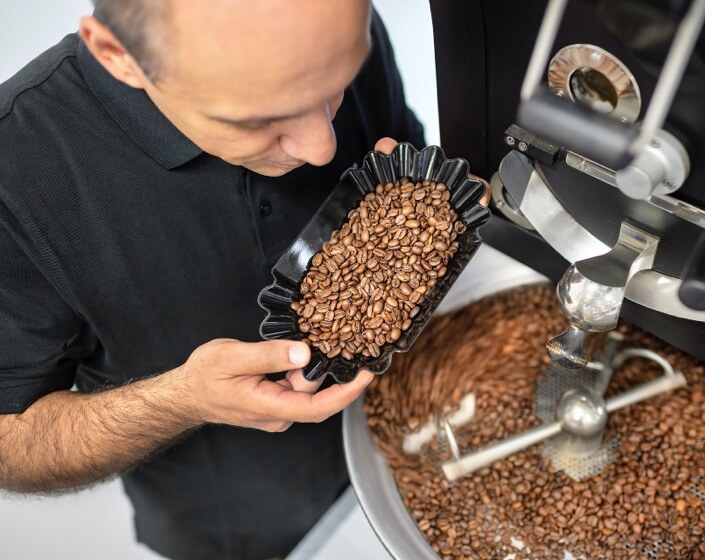We roast our beans using drum, fluid-bed or centrifugal roasters. Temperature and time settings also play a major role in determining the particular colour of the roasted beans and the flavour of the coffee.
Turning up the heat
Our espresso products, for example, get their typical dark colour and intense flavour from Italian-style drum roasting.
But regardless of which roasting process is used, we don’t rush it. The beans start out green and only gradually take on the yellow, light brown, and finally dark brown colour that we associate with coffee beans.
Each type of coffee is ground to a specific level of fineness, depending on what the final product is: for espresso destined for a classic espresso machine, the coffee must be ground especially fine. On the other hand, classical filter coffee must be ground more coarsely. And if you prefer to make your coffee in a French press, it should ideally be even coarser.


Drum, fluid-bed and centrifugal roasters
We have long roasting times that bring out more intense and full-bodied aromas from the beans. These times vary according to the type of roaster that is used.
Drum roaster
This roaster provides an even source of heat in which the beans are mixed and churned.
Roasting times range from 12 to 20 minutes.
Fluid-bed roaster
This is a hot air process in which the beans are continuously tossed and turned, normally for between 8 and 12 minutes.
Centrifugal roaster
The beans are very gently rolled around using centrifugal forces. During this process, they are treated with hot air for between 7 and 12 minutes.